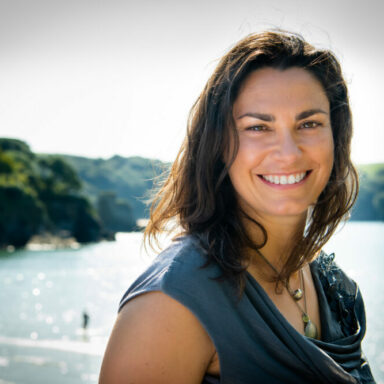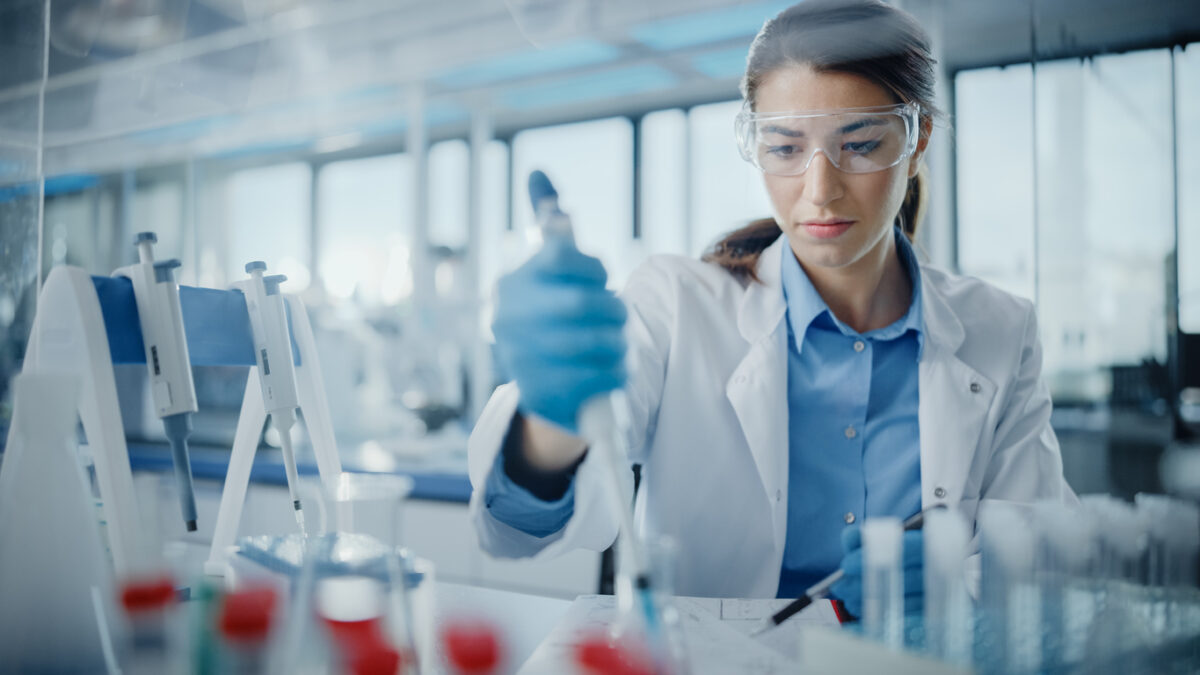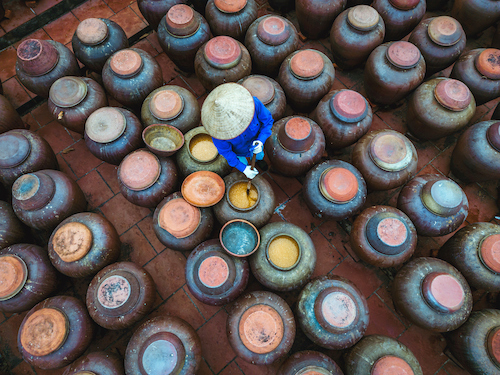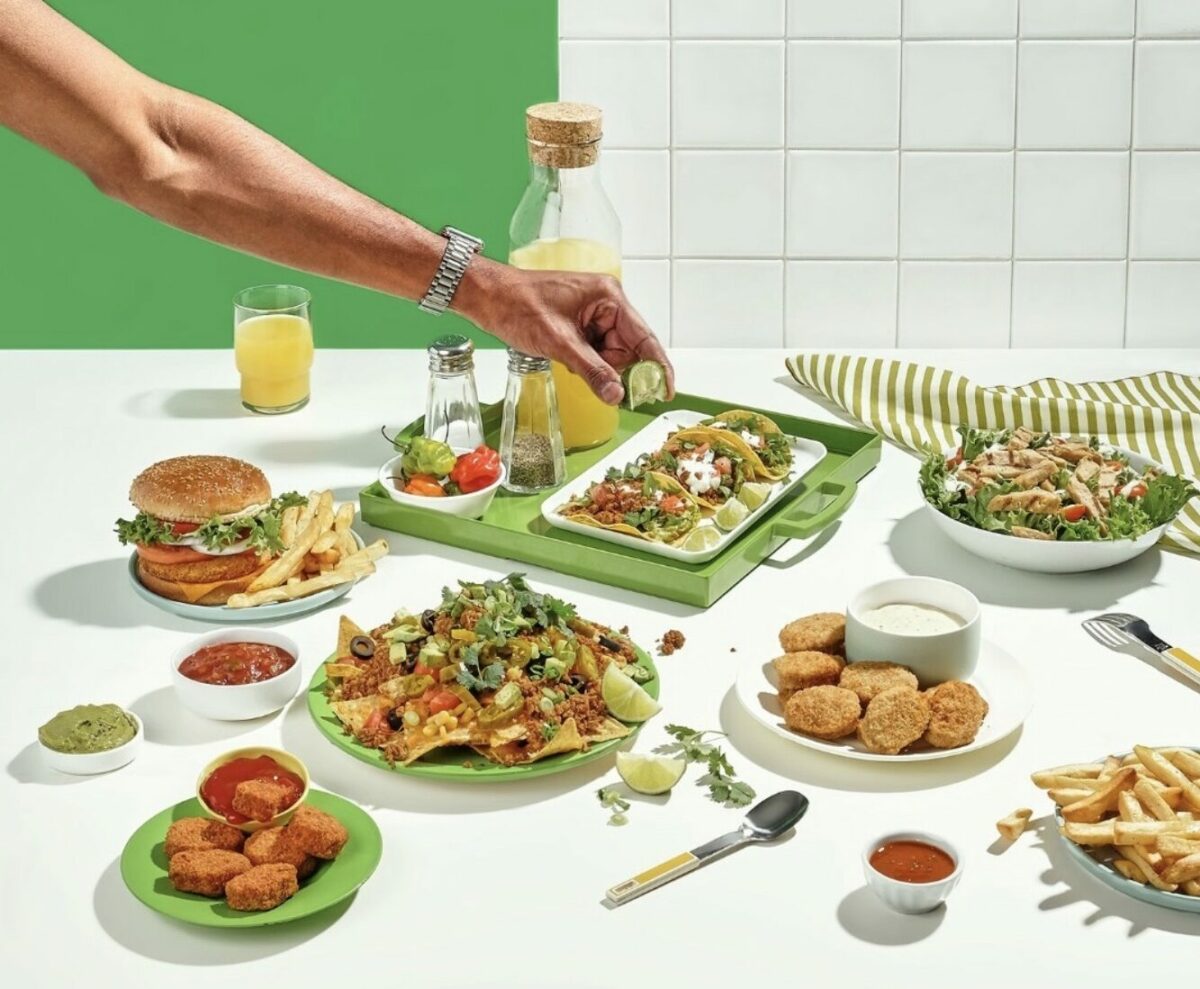Everything you need to know about precision fermentation

With recent outbreaks of avian flu combined with disruption since Brexit, the COVID-19 pandemic and the war in Ukraine, there have been times when it’s been hard to find half a dozen eggs on the supermarket shelf. Today’s food system is vulnerable in many ways, and meat and dairy account for about 14.5% of global greenhouse gas emissions. While more plant-based alternatives are becoming available, they won’t be the answer to everything. Global demand for animal protein is rising and the world population continues to grow. So how feasibly could precision fermentation enhance our food security, remove animal welfare concerns and substantially reduce greenhouse gas emissions by transforming the production of certain ingredients?
How does precision fermentation work?
Precision fermentation is like brewing. Microbes such as yeast, fungi or bacteria are cultivated in big fermentation tanks where they digest a food supply and excrete a useful product that can be separated and purified. Different microbial strains are modified to produce specific proteins or enzymes. For decades, this synthetic biotech has been used safely and effectively to make drugs such as insulin, flavour additives, rennet for cheese-making and enzymes for washing detergents.
Now, more start-ups are developing ways to create animal-free proteins without the need for intensive farming. The Food Fermentation Europe alliance hopes to enable more biotech companies to secure regulatory novel foods approval from the EU, while in the US, the trade association Precision Fermentation Alliance is championing the technology as a ‘trusted solution for a more resilient and sustainable food system’.
According to Maija Itkonen, CEO of Finland-based firm Onego Bio, the next-generation hen house is a bioreactor. Inside a vast stainless steel vessel, sugar and nutrients are fed to a fungi that has been genetically modified and effectively instructed to produce ovalbumin, the main protein found in egg white. No chickens are farmed, no fields are required, no eggshells are wasted. There’s no need for antibiotics, and no risk of salmonella, avian flu or welfare issues associated with intensified poultry farming. This process decouples production from the animal agriculture system, yet, the resulting animal-free and vegan protein is biologically identical.

Onego Bio’s animal-free albumen powder can be easily whipped with a whisk. Image: Onego Bio

Onego Bio’s animal-free albumen can be used in many applications, including confectionery and baking. Image: Onego Bio
Left: Onego Bio’s animal-free albumen powder can be easily whipped with a whisk. Image: Onego Bio
Right: Onego Bio’s animal-free albumen can be used in many applications, including confectionery and baking. Image: Onego Bio
With the food system ‘clearly in turbulence’, as Itkonen describes, and with the price and demand for cage-free eggs skyrocketing, she says that precision fermentation could crack some supply chain issues. Egg white protein is a key ingredient in food products, either used as a high-quality protein source, as an adhesive and binder or to give better viscosity, flavour, texture, colour or fluffiness, but alternative protein pioneer Itkonen insists this won’t replace your sunny-side up: “You can keep your breakfast eggs and small farmers can definitely keep their businesses. We’re talking about having this bulk protein that has this really big impact.”
How sustainable is precision fermentation?
Recent life cycle assessment (LCA) – whereby every aspect of the production process is analysed and quantified – concluded that at a pilot scale, ovalbumin produced in this way could become a sustainable replacement for chicken egg white protein powder. Calculations by Onego Bio based on this LCA found that one hectare of land could provide 10 times more protein for human nutrition if you give feed to microbes, as opposed to chickens. Compared to conventional poultry farming, land use, energy usage, water consumption and greenhouse gas emissions are all lower. “It’s about resource efficiency so it makes a lot of sense,” says Itkonen who plans to manufacture the egg protein at scale in 150,000 litre bioreactors.
Dairy farming particularly is so poor that it gives us a lot of space to go into. However, obviously we need to make sure that we have the integrity to not just say that we’re better but be able to prove it over time.“
Jevan Nagarajah, CEO and founder, Better Dairy
Professor Paul Freemont, co-founder of the Imperial College Centre for Synthetic Biology, says the path for a transition to alternative protein-based foods is ‘really clear’. “This is an obvious solution, it could be attainable. [But] if you’re going to disrupt that food system, then scalability is crucial. We can already make proteins at scale. The question is, can we make the proteins we want to make for this particular sector and can we make them at a cost price that allows the food products to be scalable? To make it mainstream, it’s going to have to be better and cheaper.”
Initially, that depends on finding an economically-viable feedstock and suitable strain of microbe. Itkonen agrees that the biggest challenge is selecting the right technologies and Onego Bio has already refined that. “We don’t see any particular worries with actual scale up – regulatory approvals can be slow, so it’s not very fast to take these new products to market but the tech is there.”
In terms of circularity, agricultural waste or an industrial by-product (at Onego Bio even cardboard boxes have been tested as feed) could be used as feedstock, while the remaining microbial biomass could be reused as raw material again or repurposed to make high-value products (perhaps bioleather, in the case of Onego Bio). “You could close that loop a little bit with some clever thinking,” Freemont suggests. With renewable energy sources, this industrial system has the potential to be relatively low carbon, but even so it won’t be completely without negative impacts. Precision fermentation needs heat, electricity, water and feedstock to grow the microbes, plus energy and resources for the purifying process too. Freemont adds that initial capital investment in materials will be required to make the factory too: “So there will be a net carbon investment in it, but over time that should pay off,” he says.
No cows needed
Jevan Nagarajah, CEO and founder of Better Dairy notices a big appetite for growth in this sector. He’s currently at the R&D stage of making cheddar without cows, using yeast fermentation to convert sugars into the milk protein casein used to make dairy cheese. “I definitely see [precision fermentation] as… a real revolutionary thing in terms of essentially giving us a way of producing food – I think it’s going to be a game changer for food production.”
“From our own perspective, sustainability is a big driver of what we’re doing,” says Nagarajah, although it’s hard to quantify exactly how much more sustainable his precision fermentation products could be compared to animal agriculture. “Dairy farming particularly is so poor that it gives us a lot of space to go into. However, obviously we need to make sure that we have the integrity to not just say that we’re better but be able to prove it over time.” So far, Better Dairy has relied on LCAs that independent third parties have carried out for big firms such as Perfect Dairy in the US that found greenhouse gas emissions are 91-97% lower for animal-free whey than for dairy milk protein. As the sector grows, more LCAs could quantify which methods are the most sustainable.
Any animal protein can be made with this efficient system. This really is the future of food. ”
Maija Itkonen, CEO, Onego Bio
He explains that with scale, price points come down, accessibility improves, scientific breakthroughs become more sophisticated and so progression is iterative. Precision fermentation could contribute to greater food security for nations too, explains Nagarajah: “As supply chains break down, a country’s ability to sovereignly own their food supply chain is becoming increasingly important.”
Singapore is leading the way, thanks to investment towards innovative start-ups, funding for academic research and modifications to the regulatory process. He explains that advances are accelerated by the country’s governmental mandate to produce 30% of their own food by 2030: “They’re so constrained in terms of land and space that they are investing heavily in new ways of making meat, new ways of making dairy.”

A pizzaiolo makes pizza using New Culture’s animal-free cheese. Image: New Culture

Pizzas made with New Culture’s mozzarella cheese. Image: New Culture
Left: A pizzaiolo makes pizza using New Culture’s animal-free cheese. Image: New Culture
Right: Pizzas made with New Culture’s mozzarella cheese. Image: New Culture
In the US, there seems to be a clearer path to commercialisation with regulation that enables some precision fermentation companies, including Perfect Day, to get products on the shelf, Nagarajah says. But the UK’s regulatory process is ‘not necessarily fit for purpose’: “There’s an opportunity for regulators to devise regulation that is suitable for purpose, does safeguard the consumers, but also allows companies like ours to get products to market quicker, obviously not dropping the bar on safety and quality.”
Like Better Dairy, New Culture is developing casein proteins, this time for animal-free mozzarella cheese that should launch in US pizzerias in 2024. “If you want any sort of melt or stretch, all that functionality comes from casein protein in milk,” explains Priya Kumar, Director of Marketing and Communications for New Culture. “People love cheese and we often hear that people have a hard time going plant-based or vegan, making sustainable choices, because of cheese. So it has the power to really shift culture if we can make a cheese that’s as delicious, but with a fraction of the environmental footprint.”
The scalability of precision fermentation
As companies scale up from bench stage in the lab to pilot, demonstration and finally commercial, the precision fermentation process gets refined, production costs come down, and Kumar expects animal-free cheeses to eventually undercut established dairy cheese costs. For now, she says the critical bottleneck is scaling the infrastructure to a point that brings the price down.
Capacity is another barrier, according to Freemont. A 2023 trends report by biomanufacturing database Capacitor outlines that globally, facilities contain over 30 million litres of fermentation capacity. Many facilities have bioreactors up to the 20,000 litre size but there are just a handful with capacity greater than 100,000 litres. The report concludes that ‘existing fermentation capacity doesn’t match what the majority of users are seeking’.
With greater investment, that could change but could the animal-free protein world be dominated by just a few huge corporations backed by venture capitalist investment? Freemont thinks not. “There’s always a danger when you have monopolies of technology, but I don’t think that [domination] will happen,” he says. A more regionalised food manufacturing system could be key, he adds, and precision fermentation could rapidly develop here if the UK Government saw it as a significant step to reduce unsustainable agricultural emissions and reach net zero by 2050. Freemont worries more about monopolies over feedstock, especially in a country that doesn’t grow biomass crops for fermentation.
In 2019, Tomas Linder, Associate Professor of Microbiology at the Swedish University of Agricultural Sciences, warned that the limits don’t lie in the biotech but rather in how we use it: “Whether such technologies could also translate into a reduction in the overall environmental footprint of food production while simultaneously addressing food-related societal issues such as hunger, malnutrition, and poverty will depend on policy choices made in how such technologies are implemented.”
So anything is possible and Itkonen is unsurprisingly optimistic: “Any animal protein can be made with this efficient system,” concludes Itkonen. “This really is the future of food.”








